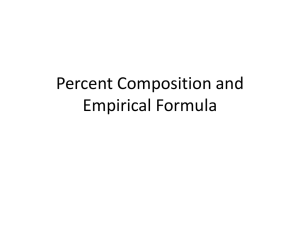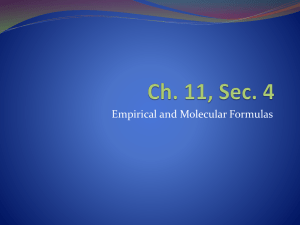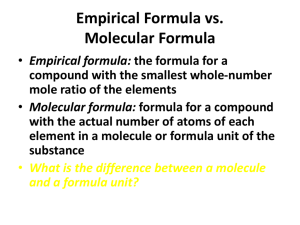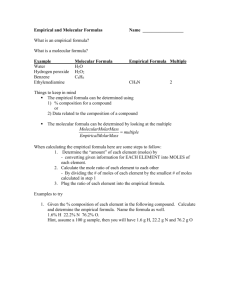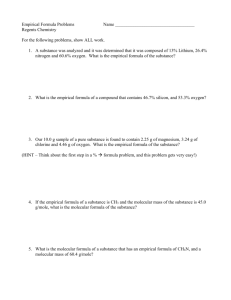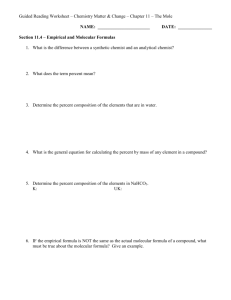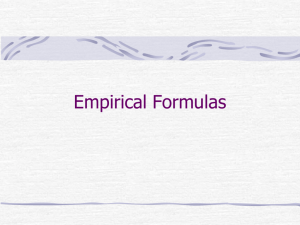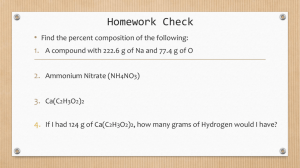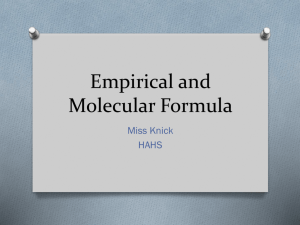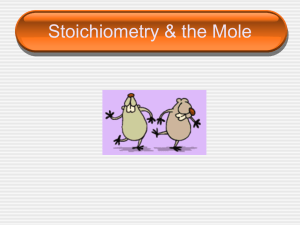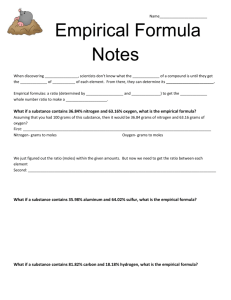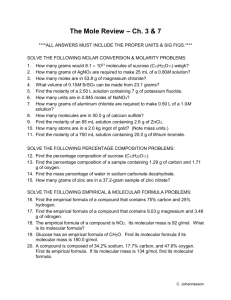The empirical formula of a chemical compound is the simplest whole
advertisement
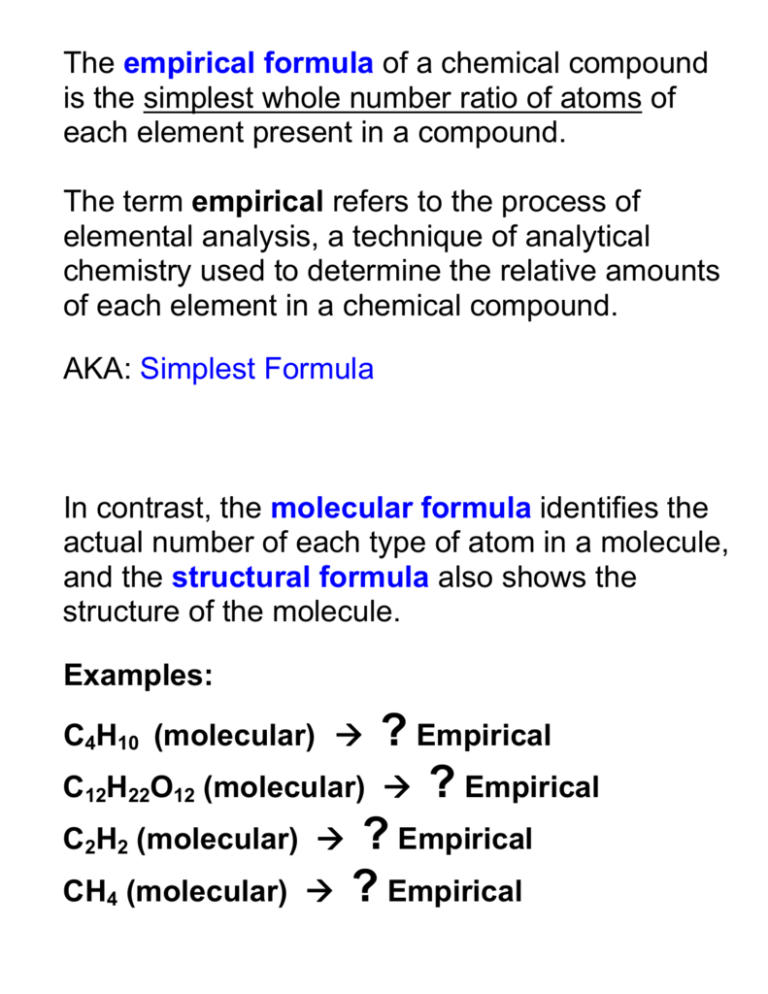
The empirical formula of a chemical compound is the simplest whole number ratio of atoms of each element present in a compound. The term empirical refers to the process of elemental analysis, a technique of analytical chemistry used to determine the relative amounts of each element in a chemical compound. AKA: Simplest Formula In contrast, the molecular formula identifies the actual number of each type of atom in a molecule, and the structural formula also shows the structure of the molecule. Examples: ? Empirical C12H22O12 (molecular) ? Empirical C2H2 (molecular) ? Empirical CH4 (molecular) ? Empirical C4H10 (molecular) Steps for Determining an Empirical Formula 1. Start with the number of grams of each element, given in the problem. If percentages are given, assume that the total mass is 100 grams so that the mass of each element = the percent given. 2. Convert the mass of each element to moles using the molar mass from the periodic table. 3. Divide each mole value by the smallest number of moles calculated. 4. Round to the nearest whole number. This is the mole ratio of the elements and is represented by subscripts in the empirical formula. If the number is too far to round (x.1 x.9), then multiply each solution by the same factor to get the lowest whole number multiple. Examples: If one solution is 1.5, then multiply each solution in the problem by 2 to get 3. If one solution is 1.33, then multiply each solution in the problem by 3 to get 4. If one solution is 1.25, then multiply each solution in the problem by 4 to get 5. If one solution is 1.20, then multiply each solution in the problem by 5 to get 6.
